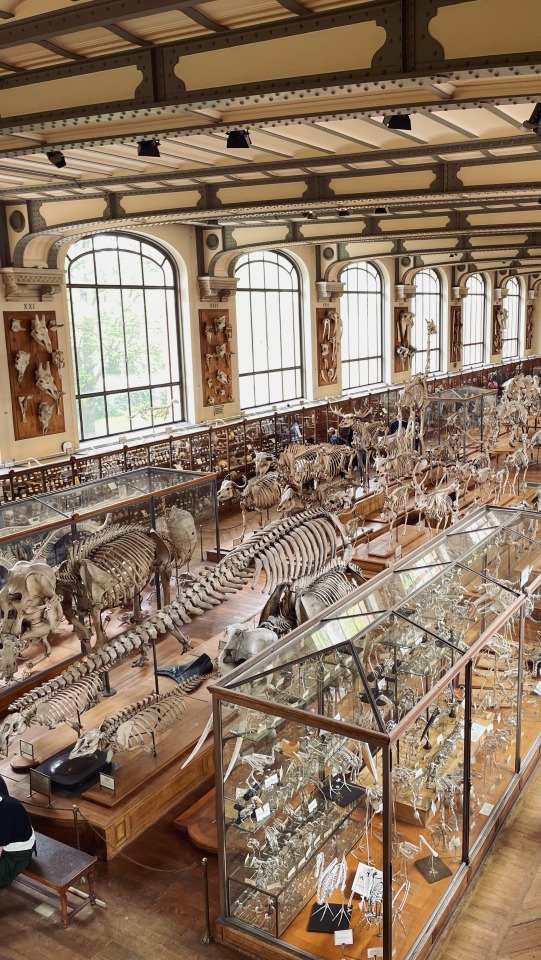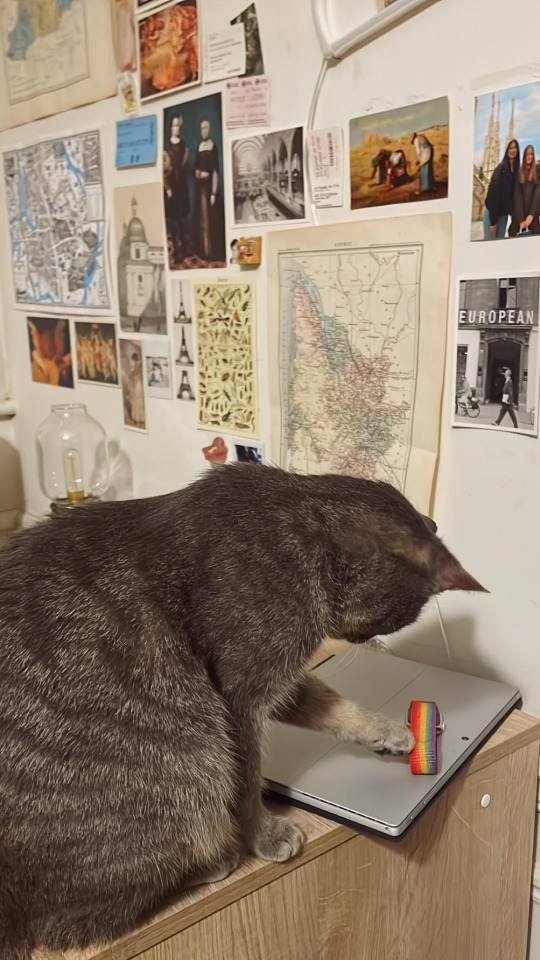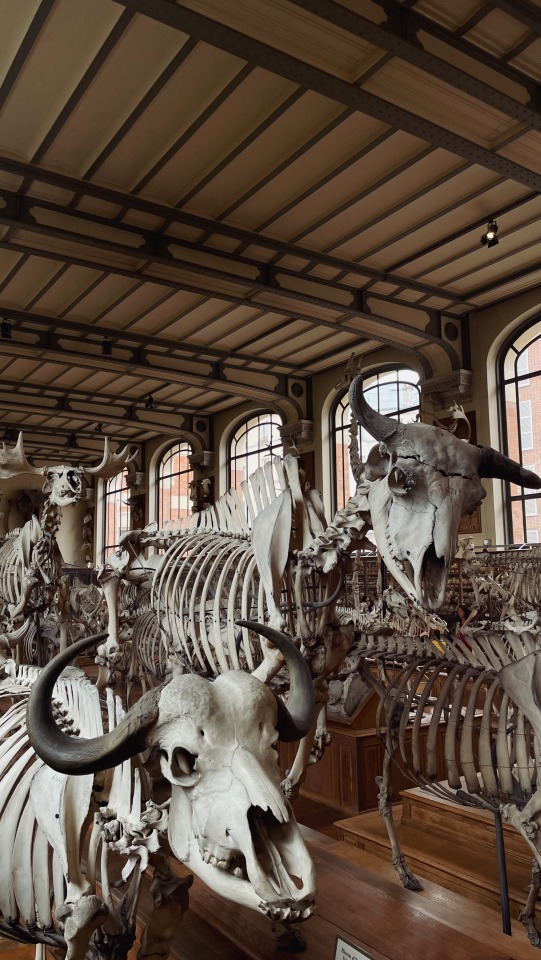The Dumbbell Nebula M27




The Dumbbell Nebula M27
Another planetary nebula, the Dumbbell nebula lies around 1,300 light years from Earth in the constellation of Vulpecula. It's estimated from it's expansion to have been from the collapse of the white dwarf (centre) around 10,000 years ago.
The average planetary nebula is thought to be visible for around 20,000 years, which is a blink of an eye in terms of the life length of even the shortest lived stars.
More Posts from Serenablakeoffice and Others




“I have always imagined that Paradise will be a kind of a Library.” -Jorge Luis Borges ♡






l lulumoonowlbooks (x)






I finished all of my psychology plus french exams and assignments! Having some free time feels like the reward~

NGC 6946 - Fireworks Galaxy
Face on spiral galaxies are not only amongst some of the most stunning objects in the night sky, but they reveal so much about galaxies, including our very own.
This galaxy is 25.2 million light years from us, in the constellation of Cepheus & Cygnus. It's 87,000 light years in diameter (100k for the Milky Way), so not too dissimilar.
Like most spiral galaxies it has a inner core of older more yellow/red stars giving a more creamy appearance, while the outer arms are dominated by vast nebula (pink) and large blue stars that come along with active star formation, for a few million years at least.
Unlike the Milky Way, it is classified as a star burst galaxy due to the huge amount of star formation, and why it's alter-ego "Fireworks Galaxy" is fairly apt, it has experienced 10 known supernova since records began.

Time Traveler ⏳

Leaving London for a week–– I always miss the city, looking forward to being back already (and who can blame me, just look at this light in the library)
The Large Magellanic Cloud

The Large Magellanic Cloud (LMC) is nearly 200,000 light years from earth. The picture above shows how it consists of vast clouds of dust and gas most likely from old stars going supernova. It is a stellar nursery for stars, similar to a nebula.
Close to this is the Small Magellanic Cloud (SMC) and it is largely believed that their irregular shape is due to a collision that occurred between them thousands of years ago.
A prominent feature of the LMC is the Tarantula nebula (which the James Webb telescope recently took a high res photo of).

Sadly, those in the Northern Hemisphere never get the chance to see the LMC - it is only visible in the Southern Hemisphere!

Kowloon: The Walled City
-
 skarlettriott reblogged this · 1 year ago
skarlettriott reblogged this · 1 year ago -
 the-importance-of-being-wilde reblogged this · 1 year ago
the-importance-of-being-wilde reblogged this · 1 year ago -
 aeyriabird reblogged this · 1 year ago
aeyriabird reblogged this · 1 year ago -
 nooraa3 liked this · 1 year ago
nooraa3 liked this · 1 year ago -
 angelbvn liked this · 1 year ago
angelbvn liked this · 1 year ago -
 lowkey-brat liked this · 1 year ago
lowkey-brat liked this · 1 year ago -
 69bahaha liked this · 1 year ago
69bahaha liked this · 1 year ago -
 spaceman-of-space reblogged this · 1 year ago
spaceman-of-space reblogged this · 1 year ago -
 blade2101 liked this · 1 year ago
blade2101 liked this · 1 year ago -
 mycircularlight2point0 liked this · 1 year ago
mycircularlight2point0 liked this · 1 year ago -
 worstfeelingever reblogged this · 1 year ago
worstfeelingever reblogged this · 1 year ago -
 ameliaearheart123 liked this · 1 year ago
ameliaearheart123 liked this · 1 year ago -
 emptied-cards reblogged this · 1 year ago
emptied-cards reblogged this · 1 year ago -
 emptied-cards liked this · 1 year ago
emptied-cards liked this · 1 year ago -
 venus-born reblogged this · 1 year ago
venus-born reblogged this · 1 year ago -
 venus-born liked this · 1 year ago
venus-born liked this · 1 year ago -
 raven-thecelt liked this · 1 year ago
raven-thecelt liked this · 1 year ago -
 sillyguy-indeed liked this · 1 year ago
sillyguy-indeed liked this · 1 year ago -
 yoga-onion liked this · 1 year ago
yoga-onion liked this · 1 year ago -
 hidingfromdoubt reblogged this · 1 year ago
hidingfromdoubt reblogged this · 1 year ago -
 hidingfromdoubt liked this · 1 year ago
hidingfromdoubt liked this · 1 year ago -
 tehdudezors liked this · 1 year ago
tehdudezors liked this · 1 year ago -
 tayepare liked this · 1 year ago
tayepare liked this · 1 year ago -
 bonnieandstars liked this · 1 year ago
bonnieandstars liked this · 1 year ago -
 eleven-seventy-seven reblogged this · 1 year ago
eleven-seventy-seven reblogged this · 1 year ago -
 flashytoes liked this · 1 year ago
flashytoes liked this · 1 year ago -
 slushietwink reblogged this · 1 year ago
slushietwink reblogged this · 1 year ago -
 zanyflower7 liked this · 1 year ago
zanyflower7 liked this · 1 year ago -
 spookyfox52 liked this · 1 year ago
spookyfox52 liked this · 1 year ago -
 spookyfox52 reblogged this · 1 year ago
spookyfox52 reblogged this · 1 year ago -
 astronomer-alchemist liked this · 1 year ago
astronomer-alchemist liked this · 1 year ago -
 piranha1 liked this · 1 year ago
piranha1 liked this · 1 year ago -
 joyfulfandaze liked this · 1 year ago
joyfulfandaze liked this · 1 year ago -
 thejokerjulius liked this · 1 year ago
thejokerjulius liked this · 1 year ago -
 sekai693 liked this · 1 year ago
sekai693 liked this · 1 year ago -
 ja-ro liked this · 1 year ago
ja-ro liked this · 1 year ago -
 tygrr69 liked this · 1 year ago
tygrr69 liked this · 1 year ago -
 yobroimnothere liked this · 1 year ago
yobroimnothere liked this · 1 year ago -
 pushjacketl liked this · 1 year ago
pushjacketl liked this · 1 year ago -
 graveyardstorm liked this · 1 year ago
graveyardstorm liked this · 1 year ago -
 caviarsonoro liked this · 1 year ago
caviarsonoro liked this · 1 year ago -
 arisamzb liked this · 1 year ago
arisamzb liked this · 1 year ago -
 bleuutopie liked this · 1 year ago
bleuutopie liked this · 1 year ago -
 eama59 liked this · 1 year ago
eama59 liked this · 1 year ago
